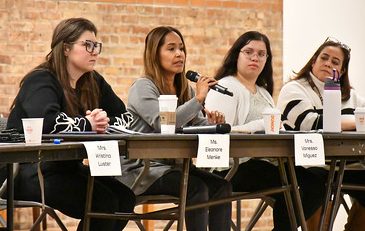Bring your own device policy to prepare students for college
Both before and after school, the Mount Carmel Student Commons is flooded with students working on homework. On any given day, many of those students are using electronic devices to access information. Whereas in the past, the school’s wi-fi connections were spotty and slow, the school made a significant investment this past summer to upgrade the school’s bandwidth and wi-fi access points. As a result, starting with Trimester 2 students have found it much easier to run their electronic devices efficiently.
In addition, the second half of the school year after Christmas break marks the beginning of a trial period for Mount Carmel’s new “bring your own device” approach to technology usage. Freshmen will be able to use a device of their choice (other than a phone), as long as it conforms to some basic educational guidelines. For example, devices must have a 7″ screen, a keyboard, and 3+ hours battery life.
Why not phones? According to Mount Carmel Principal John Stimler, although phones are probably the most popular device of this generation of this generation of students, they lack the necessary screen size for quality academic work. Also, they don’t always provide the applications needed, like Word, Final Cut Pro, and Powerpoint, which are the frequently required for projects and homework assignments.
In addition to launching the new BYOD program, the school recently opened a prototype “smart classroom” that teachers and students will use to “test drive” new technology and classroom design. On the basis of feedback, the administration will incorporate the best features of the prototype classroom in planning future classroom upgrades.
Spanish Teacher Antonio Mota demonstrated some of the new “smart” technology during the Open Houses on Sunday, November 8 and Thursday, December 3. He was excited to be the first teacher to have access to this new teaching/learning environment. While he acknowledged that there’s a lot to learn, he was undaunted by the challenge. “You just have to play with it.”
Stimler is confident that the various upgrades will enable faculty to “reinvent” the way they teach and students will learn. However, he still expects teachers to focus on context and skills. He also expects students to be more versatile and creative. He points out that presently, “when projects due in class, everyone always wants to do a powerpoint instead of making something different.”
Mr. Timothy Surges, the network administrator for Mount Carmel, thinks these changes represent “a huge leap forward.” The school now has more than enough bandwidth and sufficient wireless access points to support all the portable devices that students will use, while continuing to offer students four computer labs.





